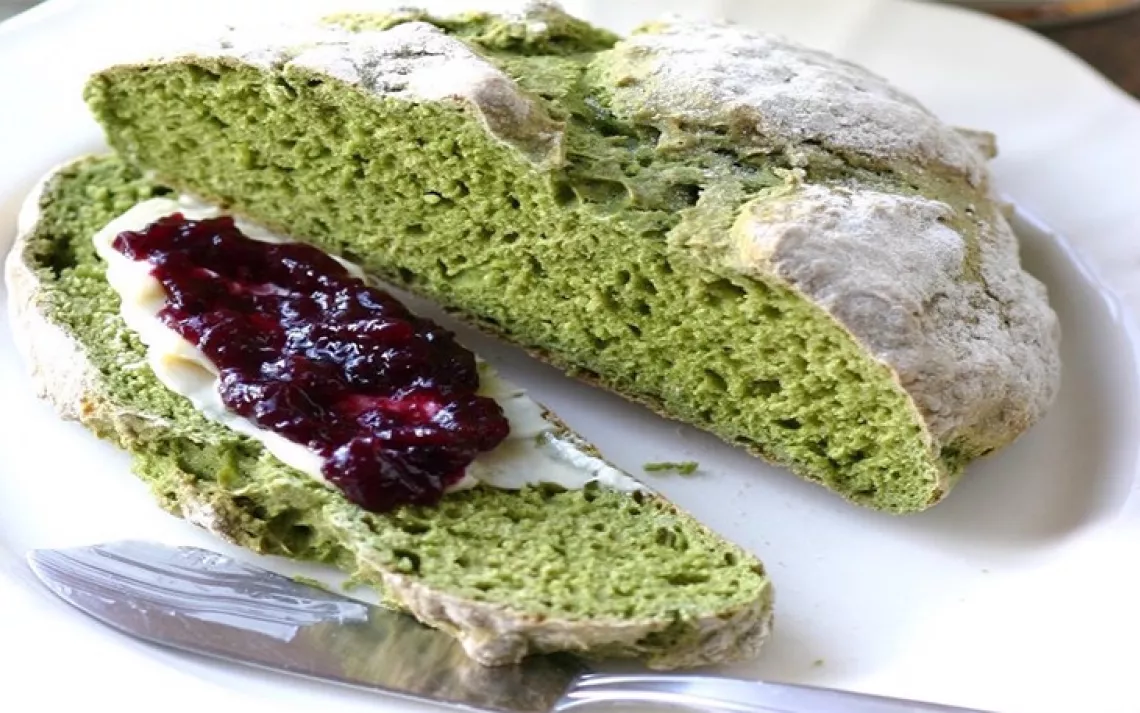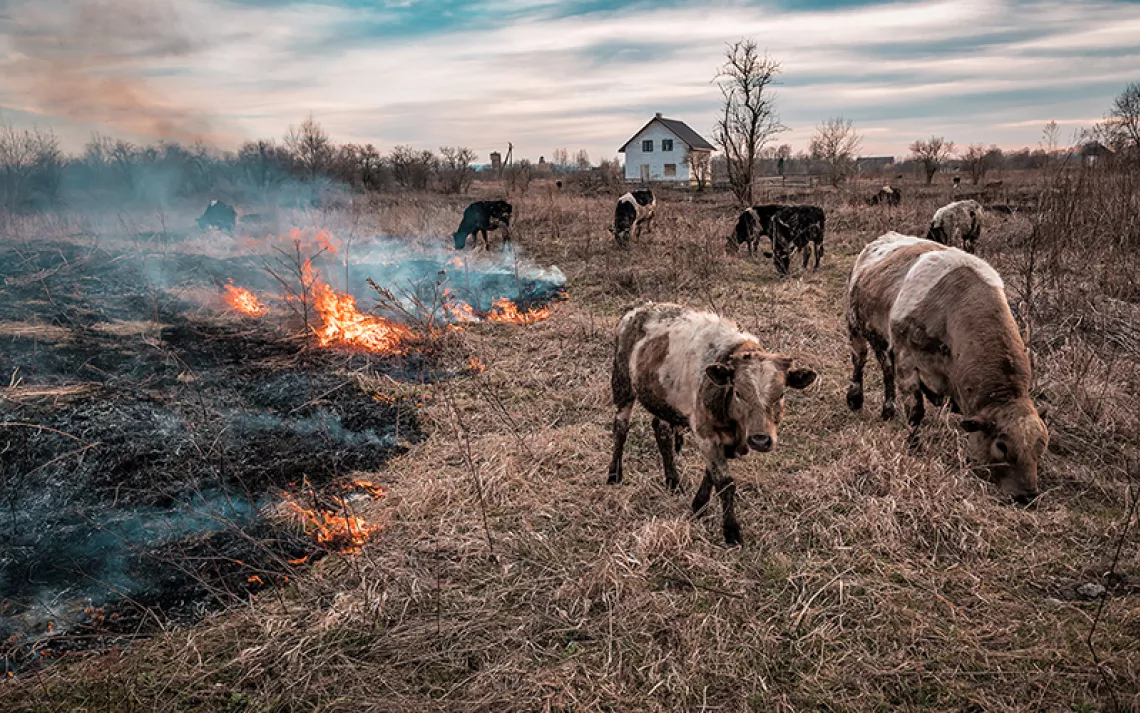A Burger That Vegans Can Love?
Inside Impossible Foods’ quest to make a meatless patty
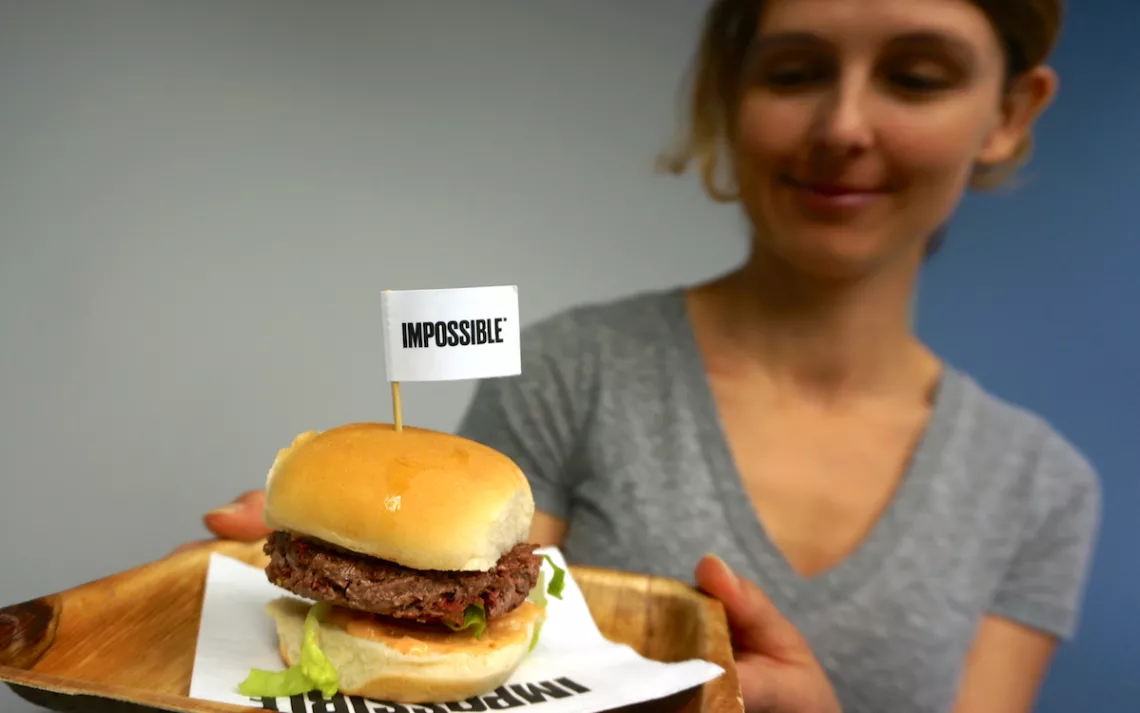
Photos courtesy of Jeff Greenwald
Pat Brown, the CEO and founder of Impossible Foods, has a vision: He wants the positive impact of his company to be visible from outer space. Meat production is a significant contributor to greenhouse gas emissions and, in many developing countries, a driver of deforestation as well. Brown aims to achieve his goal by drastically reducing meat consumption—partly by redefining what we carnivores accept as meat.
He’s starting by reinventing the hamburger.
It’s a thorny enterprise, as eating is supremely cultural—an experience that’s all about perception, flavor, aroma, and appearance. If a plant-based meat replacement is going to succeed, it has to hold up against childhood memories of meatballs stewing on the stove or Fourth of July burgers on the grill. Any substitute has to look, cook, and taste exactly like meat.
Why even bother re-creating meat in vegan form? To those who have weaned themselves away from prime rib, bacon, tilapia, and chicken parmesan, it seems ridiculous. But consumer surveys have shown that a huge number of people who are attached to the aroma and flavor of hamburger will accept a climate- (and animal-) friendly substitute, as long as it provides an authentic illusion of being meatlike.
The key to Impossible’s recipe was provided by Brown himself. A PhD in biochemistry and professor emeritus at Stanford University, Brown discovered that a molecule called heme—a precursor of hemoglobin, present in every plant and animal cell—is meat’s main flavor agent. A research team led by Celeste Holz-Schietinger, Impossible’s chief flavor scientist, confirmed this. A beet-red liquid when extracted from plants, heme is combined with plant proteins, coconut fat, flavorings, natural binders, and amino acids to produce a product that looks and tastes almost exactly like raw ground chuck.
Most important, thanks to the heme, Impossible Foods’ trial burger cooks like meat. A medium-rare Impossible burger looks not like a veggie patty but like a medium-rare hamburger. In other words, it appears to “bleed”—albeit vegan blood. It’s supremely convincing.
And why not? After all, cows subsist on plants. So hamburgers—and cows themselves—are essentially metabolized plants. But there are, of course, differences.
“A cow is a cow,” says Holz-Schietinger, who has a PhD in biochemistry. “It’s evolved that way over eons. A cow can’t keep improving its flavor. But our burger is in constant process. We can keep identifying what makes it more delicious. The Impossible burger we offer now,” she says confidently, “is better than the one we developed a month ago.”
One of the tools used for this is a gas chromatography–mass spectrometry, an imposing machine capable of cooking foods, fragmenting their aromas, and displaying their molecular components. With such technology it’s possible for the Impossible team to replicate some of those compounds without raising and slaughtering any animals. But such information would be useless if the researchers couldn’t tell exactly what the machine was “smelling”—that’s why there’s a “nose port” where flavor scientists can use their own snouts.
Large-scale manufacturing of the Impossible Foods burger occurs at the company’s new facility in Oakland, California. The company is looking ahead to producing at least a million pounds of plant-based beef a month; already, the company’s beef-free burgers are sold at about two dozen restaurants across the United States. Impossible Foods’ corporate offices and food labs are located in nearby Redwood City, where 85 scientists concoct new iterations of the burger. In a continual effort to tweak the product, formal tastings of the new versions—prepared in a test kitchen—occur several times a week.
In a first for the company, Impossible Foods agreed to let me join their scientists during an April tasting.
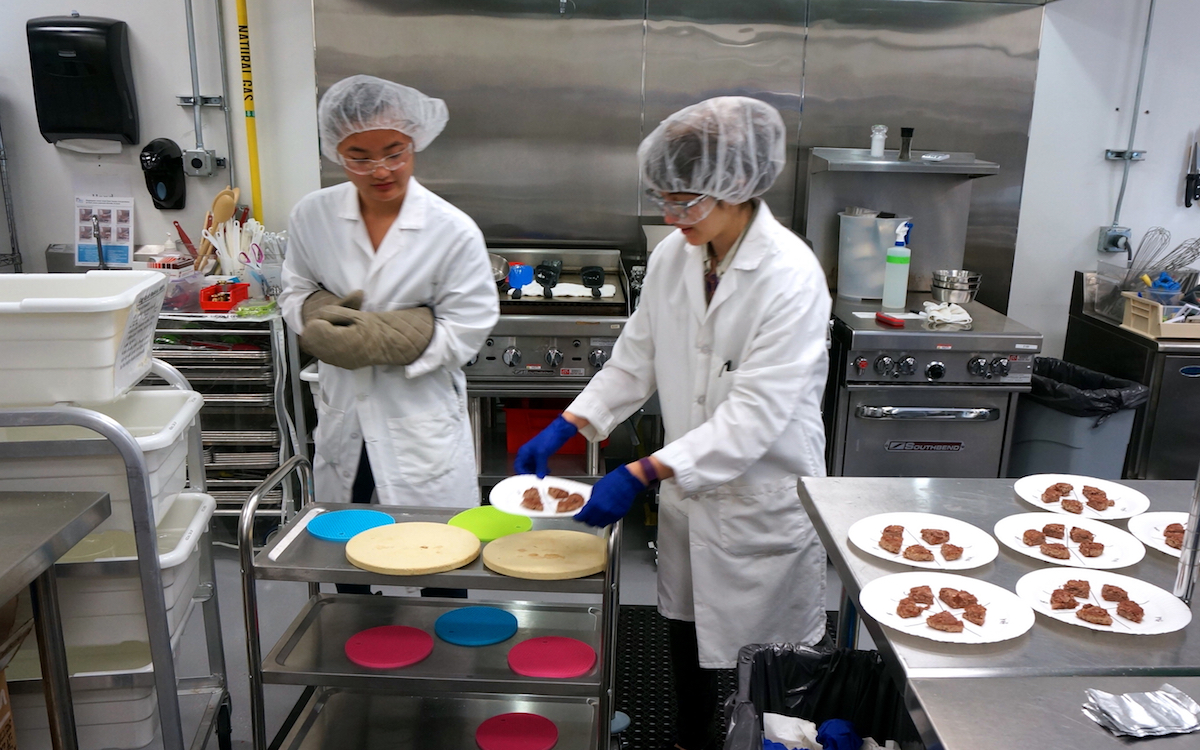
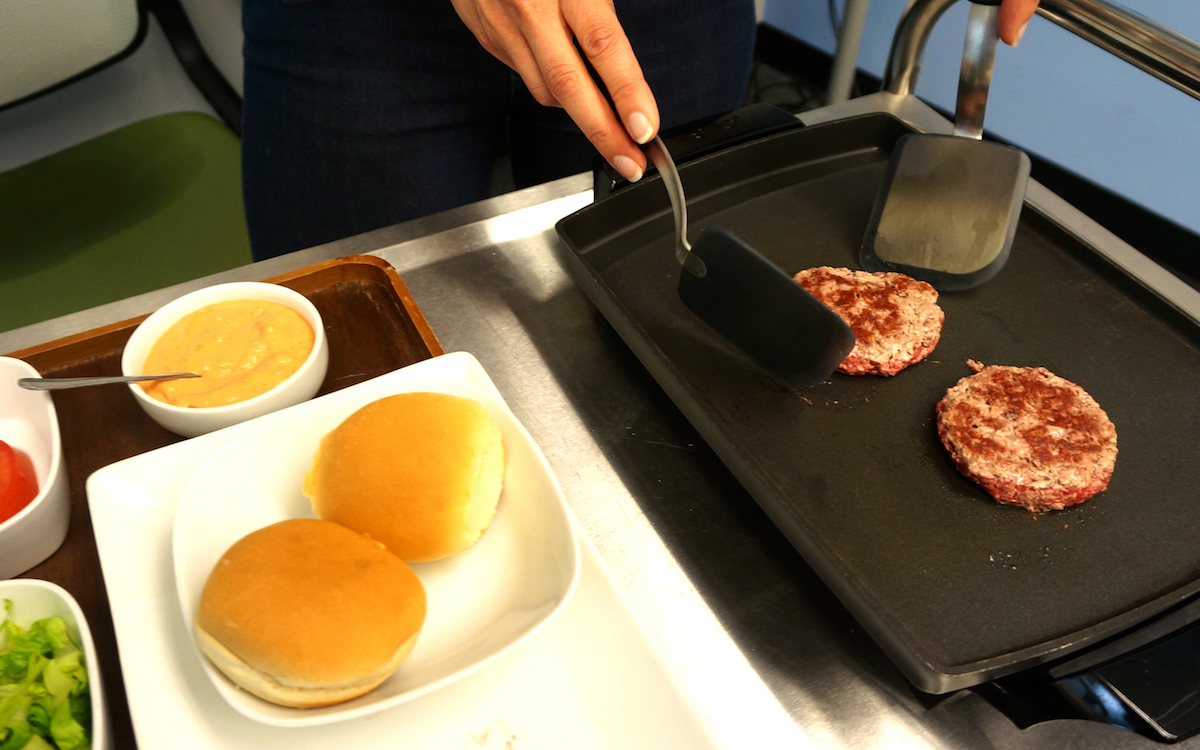
*
At about 11 A.M., eight people—Holz-Schietinger, six of Impossible’s flavor scientists, and me—sit around a rectangular table in an unremarkable conference room. We’re provided with crackers (to cleanse the palette), spit cups (those small samples can add up to a big meal), and small, foil-wrapped chunks of real hamburger (to tune our palettes to the taste of actual beef). This benchmark sample isn’t organic, grass-fed beef—just Safeway’s lean ground 80/20, the common denominator of what most Americans consider “real” hamburger.
Paper plates are brought in from the test kitchen. Each holds four bite-size chunks of Impossible’s new burger attempts, as well as a sample (for reference) of the current recipe. New versions of the vegan hamburger are named—alphabetically, like hurricanes— after birds. During my visit, the current version is called “Oriole.” Today we are taste-testing a beta version of the “P” series (Peacock? Ptarmigan? Penguin? At the time of my visit, it hadn’t yet been decided).
Everyone is given a survey form. We are asked to taste each of the four samples, jot down our flavor impressions, and rate each one (on a scale of 1 to 10) on how close the taste comes to the real hamburger we’ve been served.
It’s hard to avoid cheating. I look furtively around the room, stealing glimpses of how the flavor scientists are rating their samples. Most of my ratings seem low—between 4 and 6—and I don’t want to insult the chefs. But the flavor scientists are hanging judges; the ratings I see are rarely higher than 3. And while I describe the taste samples with throwaway words like “chewy” and “bland,” the specialists muse like oenologists: “Aromatic, with roasted coffee notes”; “Caramel, hint of oyster sauce”; “Slight char, animal notes.”
Such exaggerations in flavor are intentional, Holz-Schietinger tells me afterward. “When you are exploring what changes to make, you need to heighten the experience so you know what it is. Then you dial it down for the actual product.”
What she learned today, Holz-Schietinger says, is that the samples we tried were “probably not moving us in the right direction. But now that we see the data, we can make adjustments. We want this to be as close to beef as possible.”
The results will send the flavor scientists back into the lab, sniffing through the nose port of the gas chromatography–mass spectrometry. But that’s fine with Celeste, who sees her position at Impossible Foods as the kind of full-body researcher that is rare in laboratory science.
“I spent most of my early career working with numbers and graphs,” she observes cheerfully. “Now I get to put something in my mouth. I can use my own senses to do science.”
 The Magazine of The Sierra Club
The Magazine of The Sierra Club

